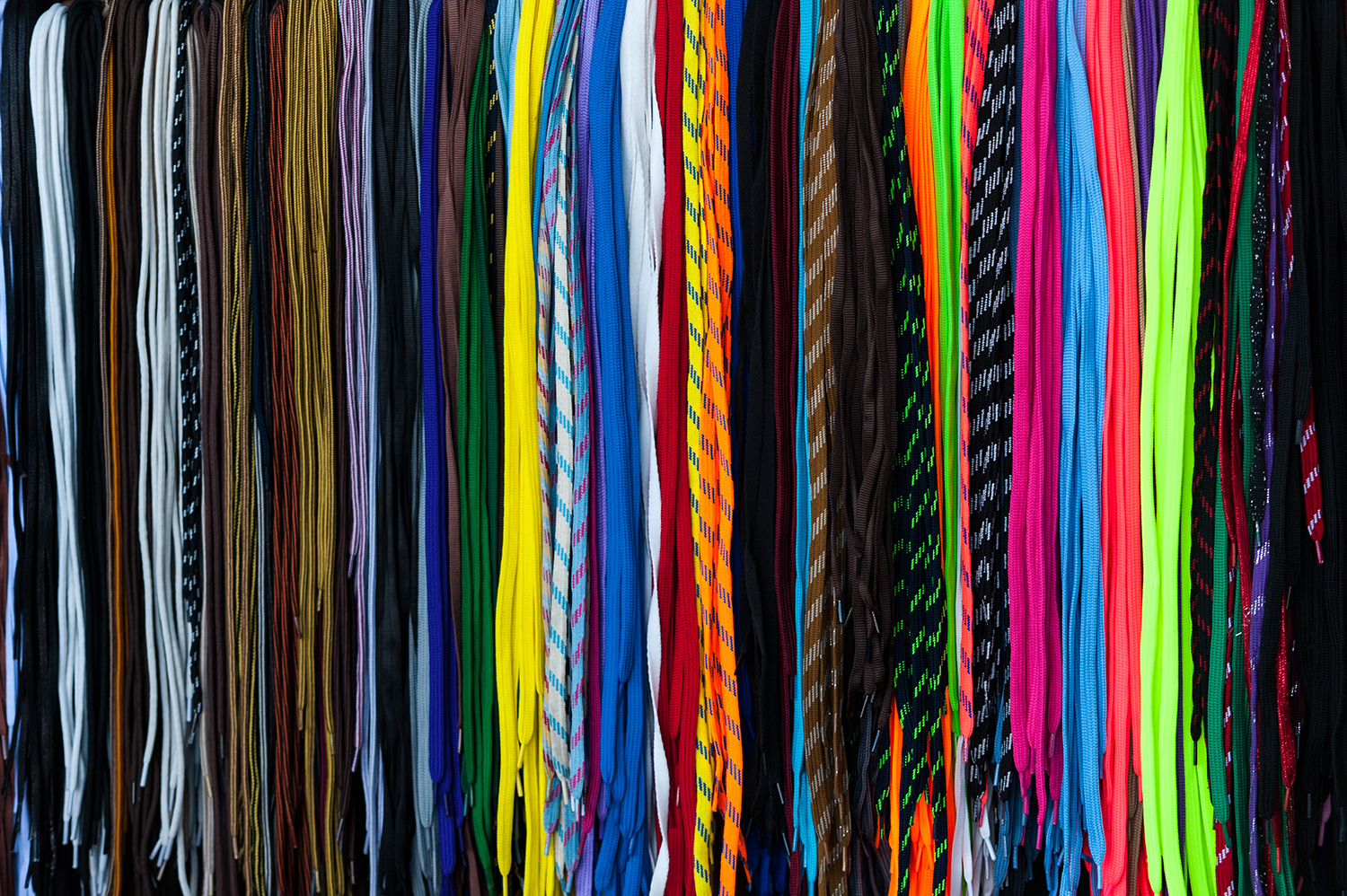
Laces help to lock the foot in place stopping it from moving around and rubbing. There are many different ways to lace footwear using different knots and threading techniques, and in doing so, it’s possible to lace footwear to benefit people with narrow heels or high insteps. The idea is to apply more pressure to certain parts of the foot while relieving pressure on other parts, and this helps to secure the foot into the footwear. Lacing should be done up tight (but not overtight) and should have even tension across the boot or shoe.
Laces are typically tied with a knot at the top of the boot or shoe, but this isn’t the only place where tying a knot is handy. Knots can also be useful part way up the boot or shoe to lock off certain areas from others, such as the lower half from the upper half.
Knots at the top of the boot or shoe
The Bow Knot
A Bow knot is the typical knot done at the top of the boot or shoe.
Knots elsewhere on the boot or shoe
The Overhand knot
This is the overhand loop that starts a bow at the top of a boot or shoe, but can also be used at other points too as a way to lock off and reduce tension below the knot.
The Surgeon’s knot
The same as the overhand loop only instead of going around just once and pulling taut, go around 2-3 times. This is a helpful way of having different tension between the upper and lower part of the boot or shoe, so it’s possible to have loose and tight sections. For instance, if there’s a sore spot at the top of the foot, make the lacing below it tight, lock off with a surgeon’s knot, the tie laces loosely above.
Fasteners
Fasteners are metal reinforced holes that make walking shoes or boots easier to lace up. There are four main types of fasteners.
Punched eyelets
Holes that are punched directly into the material, reinforced with metal grommets. Effective and inexpensive, but may tend to rip out.
Webbing:
As with punched eyelets, also tend to wear out quickly.
D-rings
Durable metal loops that allow laces to be easily done up but can irritate some users due to the increased pressure on the foot at these locations.
Hooks
Open metal hooks, often in the top 3 or 4 fastener locations. Effective for tightening boots and rare in other shoe types. If the laces are slipping, create a loop on the hook by lacing down instead of up.
Most laced footwear has criss-cross lacing.
There are an enormous number of other ways to lace shoes, including the means to deliver secret messages.
Lacing may make a huge difference when footwear doesn’t quite fit. Here are some common issues and lacing solutions.
Laces snagged on passing scrub
Try an inside-out version of straight bar lacing which keeps the knots and lace ends to one side and distributes pressure evenly. When laced so that both knots face inwards (between ankles), laces are less likely to get snagged in scrub.
Another variation is to cross the laces (like criss-cross lacing) but go down an eyelet on one side and up the eyelet on the other. This keeps the laces away from each other and gives a more uniform pull, allowing the two sides to meet if so needed.
Pressure points
Try gap lacing. Creating a gap in the middle of the lacing is an effective way of bypassing pressure areas by not having direct pressure from the lace or a lace crossover point.
This is a good way of removing pressure from the top of the foot, particularly if the shoe or boot is digging in. This can happen to people with a high instep. Reduce pressure by applying a gap lacing over the sensitive area, and consider using a surgeon’s knot to lock the laces on either side.
Alternatively, try straight bar (parallel) lacing to reduce pressure on top of the foot.
Heel blisters
Try heel-lock lacing. Blisters form when skin is rubbed continually at one spot, which can happen if the boot or shoe is loose at the heel. The heel lifts up with every step, causing friction, eventually leading to a blister. The heel-lock lacing technique allows the heel to be firmly positioned.
– For low-cut shoes, create extra loops using of the top eyelets and lace through these to tighten the heel in place.
– For high-ankle boots, use a surgeon’s knot directly opposite the heel to lock the heel in place. Then tie off higher up the boot using the metal eyelets. Note, there are many different ways to tie off. Here’s one example that uses the same locking mechanism as low-cut shoes above.
Narrow feet
Lock off footwear at multiple points. Footwear can be made to fit narrow feet better by isolating different parts of the laces with a Surgeon’s knot.
Ankle Pressure
Finish off laces differently. Take pressure off the top of the boot by bringing the laces over the top of the hooks first, then tie the laces.